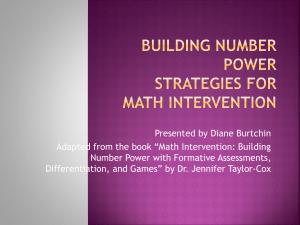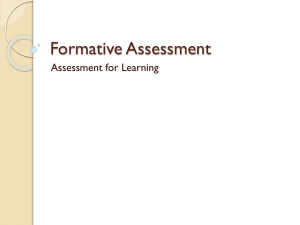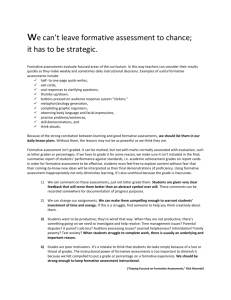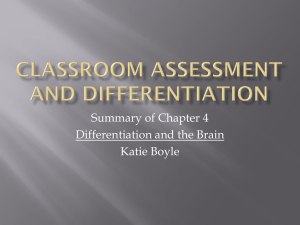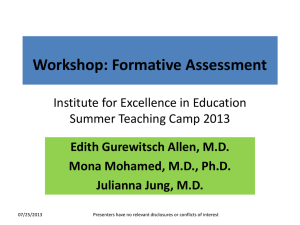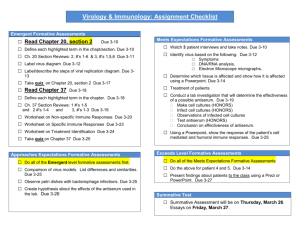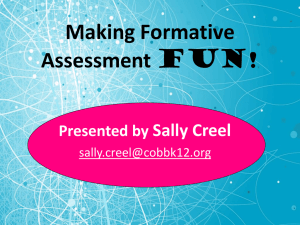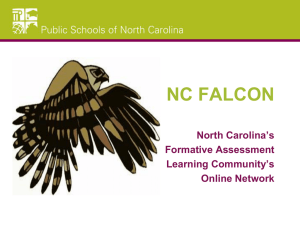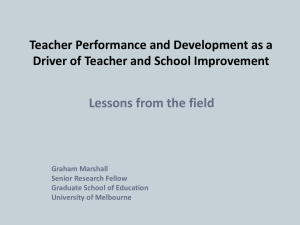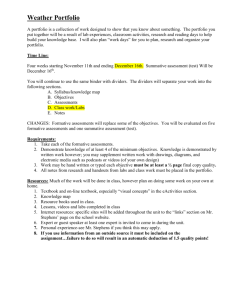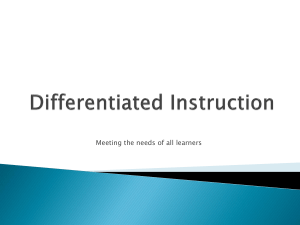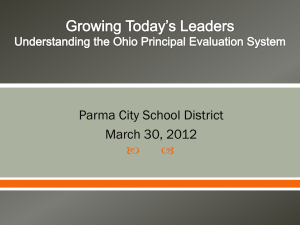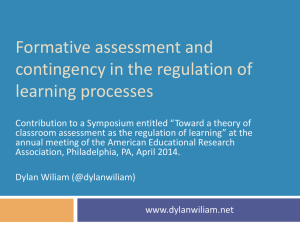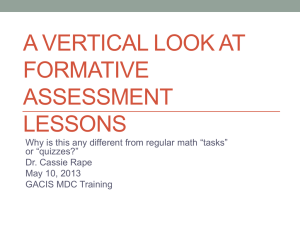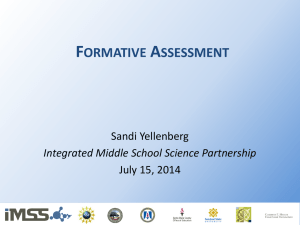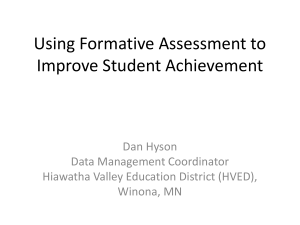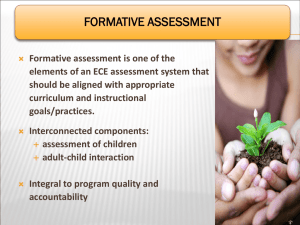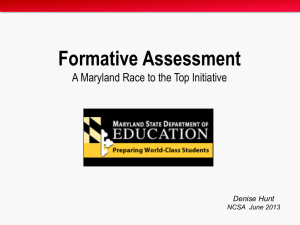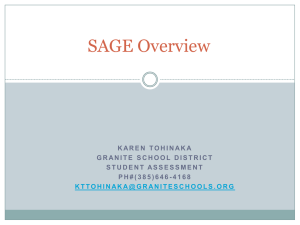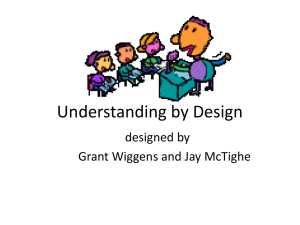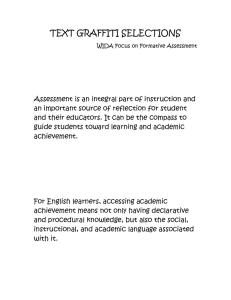Formative Assessment for Engagement - savage
advertisement
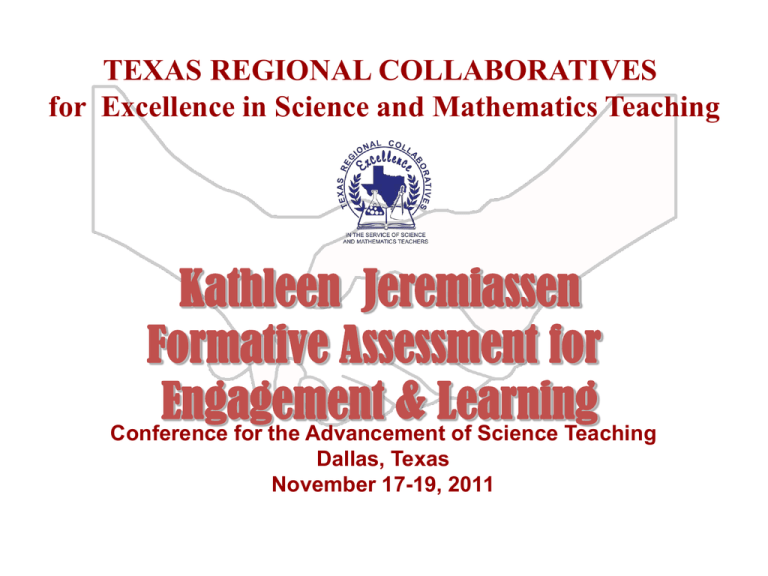
TEXAS REGIONAL COLLABORATIVES for Excellence in Science and Mathematics Teaching Kathleen Jeremiassen Formative Assessment for Engagement & Learning Conference for the Advancement of Science Teaching Dallas, Texas November 17-19, 2011 Formative Assessment for Engagement & Learning: PART of the WHOLE Kathleen Jeremiassen Irma Dru Hutchison Elementary Lamar CISD “. . . the most basic elements of an effective lesson: an essential, clearly defined learning objective followed by careful modeling or a clear sequence of steps, punctuated by: efforts during the lesson to see how well students are paying attention and/or learning the material.” -- Mike Schmoker, Results Now Sounds simple, right? Attention VS Notice taken of someone or something; the regarding of someone or something as interesting or important. Engagement Cognitive -consists of beliefs and values: rigor through higher level experiences and relevance through meaningful work Emotional - consists of motivation and feelings: establishing relationships, classroom environment Behavioral - consists of habits and skills: procedures, transitions, expectations Reality Check? How do the learning experiences we provide make our students feel? WHAT ARE FAs? FORMATIVE ASSESSMENTS are: – quick checks for understanding – aligned with the daily objective – to provide evidence of learning WHY USE THEM? ENGAGEMENT: • TEACHER-TO-STUDENT • STUDENT-TO-TEACHER • STUDENT-TO-STUDENT HIGHER ORDER THINKING UNCOVER MISCONCEPTIONS UNCOVER PRIOR KNOWLEDGE CONSTRUCT NEW KNOWLEDGE ONGOING ASSESSMENT OF LEARNING WHAT IS IT FOR THE TEACHER? • • • • • Monitor student progress Evaluates own practice Evaluates engagement Assesses small parts of learning Engages students in higher order thinking & constructive products • Higher performance on summative assessments WHAT IS IT FOR THE STUDENT? • • • • Self-reflection Self-evaluation Student centered engagement Student constructed learning, higher order thinking & authentic products • Pieces together parts of learning objectives • Prepares success on summative assessments Whoever is doing most of the talking…. ends up doing most of the learning. WHAT THEY PRODUCE: • Non-threatening results for students – Lowers the stakes for taking risks – Creates environment for learning • Direct and Immediate Feedback – Teacher and student • Structured Information – Links instruction/activity to learning • Intervention – Identifies weaknesses in student learning – Narrows the learning gap Examples of Formative Assessment for Learning: • • • • • • • • • • • • • Individual White Boards Think Pair Share or Elbow Partners Four Corner Instruction Admit Slips and Exit Slips Response logs for reflective thinking Graphic Organizers: Mind Maps, T-chart, Frayer Model Post-it Note responses Active Votes/”Clickers” Foldables Illustrations Yes/No, True/False, Green/Yellow/Red Cards Interactive Note Booking Popsicle stick questioning Group Efficacy Build community through shared learning experiences Do they work in a 5E model? Yes! Learning Cycle Target Formative Assessment Engage “The Newbie Know” Front load Lesson with Event or Question Engage students prior knowledge, illuminate misconceptions & connect ideas before lesson to inform instruction, Explore “Check & Fix” Hands-on Experience Clarify new understanding, make new connections from observations and inference within the lesson to inform instruction Explain “Mastery Check” Construct Explanation Construct explanations of new understanding, & connections to learning objective Elaborate “Bloom’s Stretch” Apply & Reflect Use metacognition to reflect on learning, challenge students to apply new knowledge & skills to new situations or related concepts under learning objective or Big Idea Evaluate “Jell-O Test” Assessment Students assess their own knowledge, skills & abilities through reflection, questions, or performance test Now Let’s Try Some! Commit and Toss • Provide student time to answer Prompt • Students “commit” to an answer and “toss” their response in the room (multiple choice, checklist, open response, T/F…) • Students responses are now anonymous and are shared • No response is “right” or “wrong”, just an idea to be explored --Paige Keeley, et. al activity sample I used to think, but now I know… • Students reflect on their misconceptions or prior knowledge and determine their new thoughts and understanding based on a classroom lesson or experience Foldable I used to But now I think… know… I think, We Think • Provide students time to write down what they think • Provide students time to share in small group and explore each others thinking, report to whole class common thoughts – “Our Class Thinks” Try: How are Weathering & Erosion interrelated? Concept Cartoon • Students look at cartoon and choose science concept that best matches their understanding • Students justify answer with a written or verbal response By Emma Baker, www.millgatehouse.co.uk Annotating Student Drawings • Students draw a concept and annotate to show meaning and understanding • Visual representation helps students make sense of their own understanding Try: Life Cycle or Food Web Felice Frankel, PI; Picturing to Learn Free Sites for Creating Cartoons • • • • • • MakeBeliefsComix.com MarvelKids.com’s Create your Own Comics Pixton ToonDoo Strip Generator Pikistrips Annotate a Photograph http://serc.ca rleton.edu/esl abs/climate/2 a.html What is happening in this picture? Ten-Two • For every 10 minutes of whole group instruction, video, audio or other presentation = 2 minutes of reflection and summarizing • Writing notes, drawings, key words Try: Write down what you have learned so far. Fist to Five • Students show their understanding on a scale from 0 to 5 • A fist means, “no clue”, 5 fingers means, “I understand completely and can explain it to someone” Two Stars and a Wish • Teacher provides 2 positive comments to reinforce what students know and 1 comment of encourages revision, correction or further improvement Two things I liked (or noticed): One thing I wish: 3, 2, 1 • 3 key ideas I will remember • 2 things I am still struggling with • 1 thing that will help me tomorrow Agreement Circles •Students stand in a circle as teacher reads a statement •Students who agree with statement move to the middle, Students who disagree stay on the circumference •Students on the inside of circle face those on the circumference and students pair share their thinking •Teachers ask for students to decide if their discussion changes their mind or stays firm, students are asked to reposition themselves if they changed their mind •Goal is to get all students in center of circle or on the circumference Try: Is global warming occurring? Agree Agreement Circle Discussion Disagree Refute or Defend •Analyze statement •Refute or Defend •Justify Try: Environmental sustainability is a global concern. Missed Conception • Analyze statement about a science concept • Describe why people might think it is true • Help understand misconceptions and develop learning empathy Some people think that putting salt on icy side walks is a good practice because “salt will melt the ice.” Give me Five • Provide time for students to think about the lesson activity • Five students share their reflection Looking Back (&Forward) • Students summarize their learning of a concept or skill • Explain how they learned it • Connect learning to process to new knowledge or skill Foldable What I How I Learned Learned About… It… What I wonder… Fact First Questioning • Turn questions around from “What” to “Why”, “How”, “Explain the process…” – Elicits deeper thinking and richer response and classroom discussion • Provide wait time • Scaffold questions to support student explanations and elaborations Odd One Out •Find which doesn’t belong in the group •Justify •Similarities and differences •Relationships •forms, functions, cycles, behaviors, patterns, properties… Recognizing Exceptions •Target overgeneralizations •Question asks for the exception Analogies •Students attach own meaning to scientific concepts, functions, structures, etc. to relate to something familiar. Four Corners •Teacher posts four possible answers or ideas for a question or a concept •Student move to the corner that matches best with their understanding •Students discuss ideas in groups and share with class Teacher Feedback Picture Feedback • Germination of a seed • A blooming flower • Egg -> cracked egg -> chick By Bill McBride By Bill McBride Achieve Through Community Muddiest Point • Ask what part was most difficult or unclear • Students respond on note card or sticky • Teacher prompts students, “Today we…” Any Questions? Point of Most Significance (POMS) • Students reflect on lesson or experience and identify key points of lesson objectives & big ideas • Teacher prompts students, “Today we…” Try: Write down the most significant points of Formal Assessments Lastly… and this takes guts: • “Hot Topic” interest Scale • Parking Lot Paige Keeley (and friends) books: Resources • Science Formative Assessment by Page Keeley • Uncovering Student Ideas in Science by Page Keeley • Common Formative Assessments by Larry Ainsworth & Donald Viegut • Working on the Work by Phillip Schlechty • The Highly Engaged Classroom & Formative Assessment & Standard Based Grading both by Robert J. Marzano • Bill McBride:http://billmcbride.pbworks.com Extra Information CAMPUS USE OF FAs: 1. Lesson planning: Focus FA on the standard or a skill (the verb in the objective). 2. Design FA to target Big Idea, Essential questions, Objectives 3. Build in Rubrics, formal or informal, to measure how well students show mastery of lesson objective. 4. Prepare for Intervention, have follow up time for remediation. 5. Discuss and Present at Team Meetings, PLCs & Vertical Team Meetings. WHAT THEY ARE NOT!! • Unit Objective instead of a lesson objective • Activity NOT focused on standard or a skill • What but no Why – No power verb set to the objective in activity. • Not measurable – How will the teacher know if the students “understand” or “know”? • Boring! Now Let’s Try Some: • Commit and Toss • I used to think, but now I know • I Think, We Think, Our Class Thinks • Concept Cartoon • Annotated Student Drawings • Annotate a photograph • Ten-Two • POMS • Muddiest Point • Fist to Five • Give me Five • Two Stars and a Wish • • • • • • • • • • • 3, 2, 1 Agreement Circles Refute or Defend Missed Conception Look Back Fact First Questioning Odd One Out Recognizing Exceptions Analogies Four Corners Teacher Feedback
